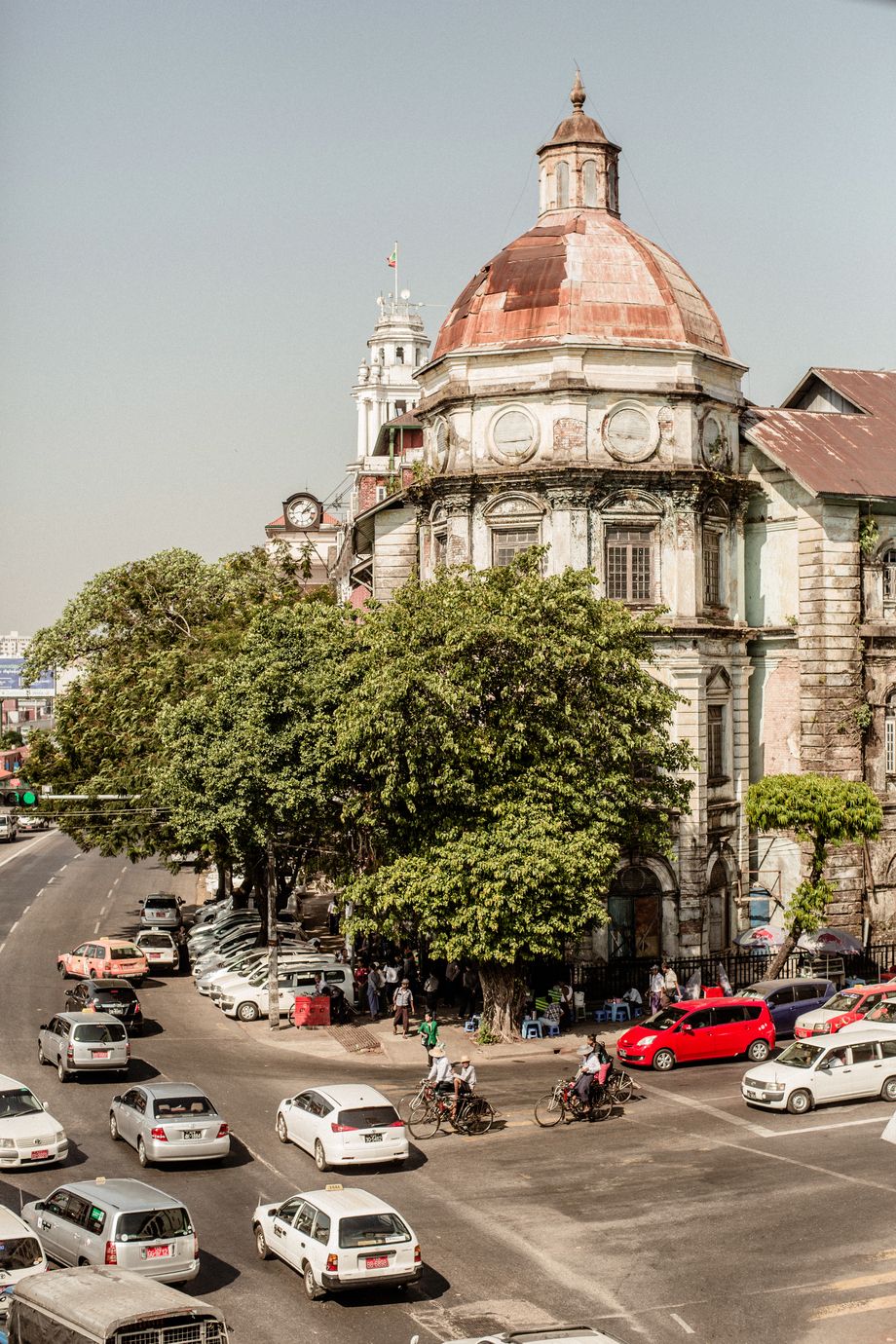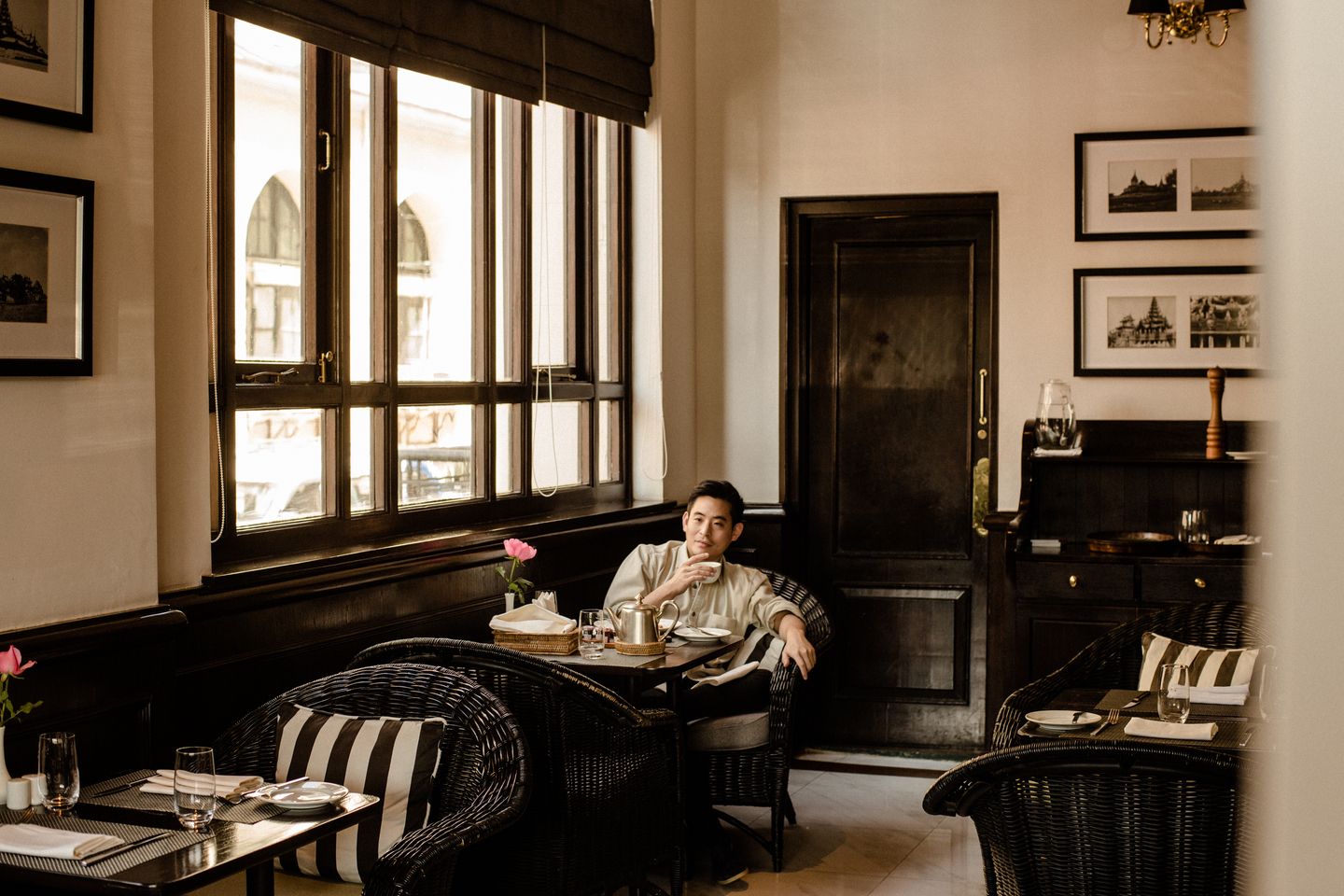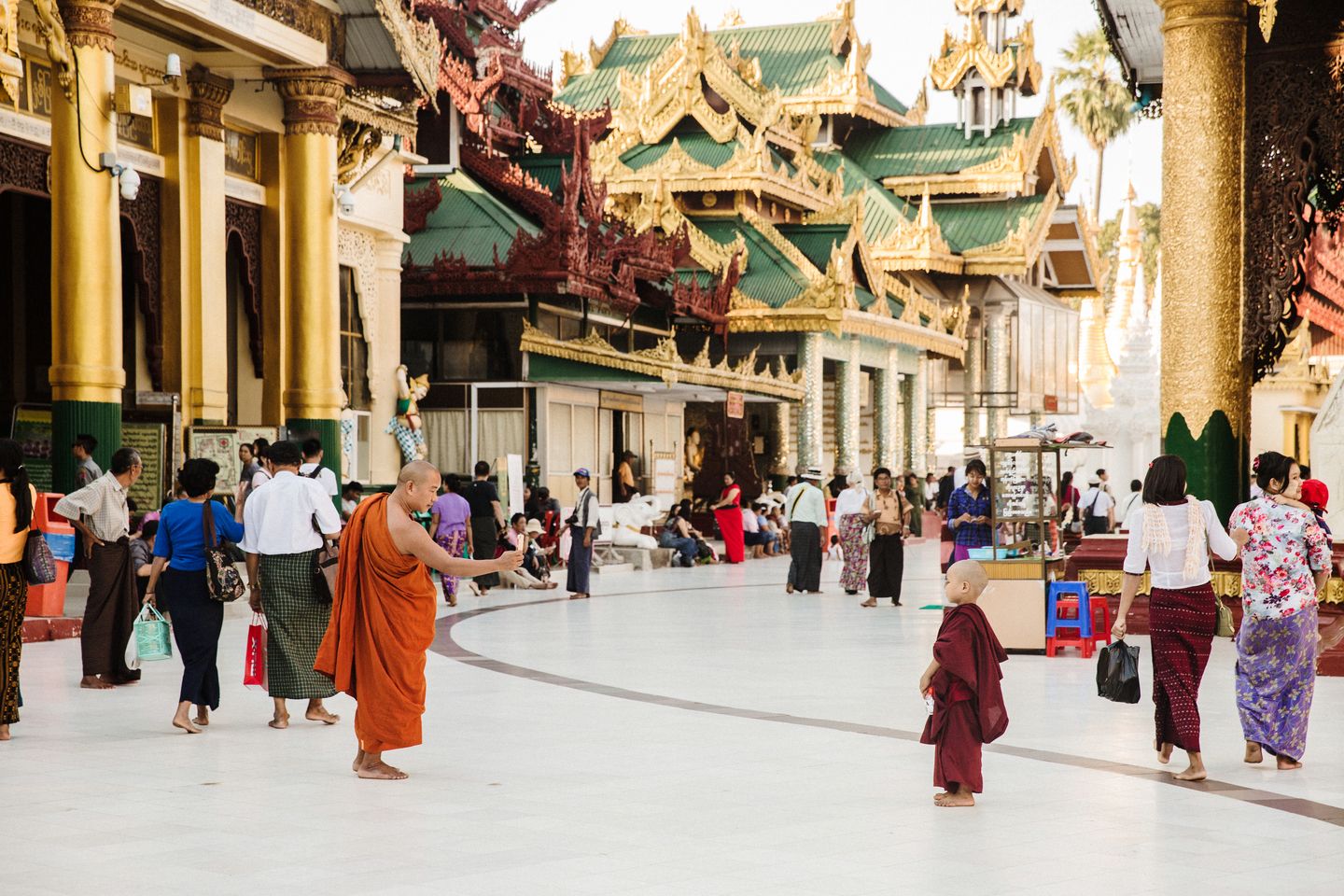The entrepreneur and art patron takes us for a walk through Yangon, Myanmar to explore its fascinating history and its rich, thriving art scene
Yangon is a city that builds among, rather than against, its ruins. Stately heritage buildings loom over a classic Southeast Asian scene of smoky street food stalls and swarms of scooters. Early mornings are particularly lively, as women sashay while balancing bags or baskets filled with produce on their heads, and men—many dressed in the traditional sarong-like longyi—crouch over small plastic stools for morning coffee as well as banter. Monks roam around the city, barefoot and often with a briefcase and smartphone in tow.
It was only seven years ago that the veil was lifted on Myanmar, also known as Burma. The once closed-off nation’s military government began transferring power to civilian leaders in 2011, and subsequently opened the country to visitors the following year. Since then, it has been growing and developing at whiplash speed, but it’s doing so on its own terms.
(Related: Showcasing The Rich Heritage Of Myanmar Through An Art Exhibition In Singapore)


The authenticity and uniqueness of Myanmar
There’s a strong and proud sense of identity in Myanmar that holds fast to authenticity. In Yangon, the country’s former capital once known as Rangoon, you won’t find a McDonald’s or 7-Eleven. Instead, you’ll uncover boutiques by designers harnessing tribal weaving techniques and restaurants showcasing traditional flavours from the country’s different regions. There’s a clear desire to do things in a way that’s uniquely Burmese—to modernise what’s already there rather than completely redefine itself.
“Yangon is very charming,” says Ivan Pun, a prominent figure in Yangon’s up-and-coming art scene and the founder of Pun + Projects, through which he owns a number of restaurants and spearheads creative ventures in Yangon and Hong Kong. He graciously offered to show us around the city, and we happily obliged. “Myanmar really embraces its own culture. A lot of countries, in their early stages of development, aspire to copy and be like somewhere else while ignoring their own culture. Luckily, the people here are very passionate about their heritage, and that’s really helped the city retain its authenticity.”
(Related: 6 Artists From Myanmar You Should Know)




